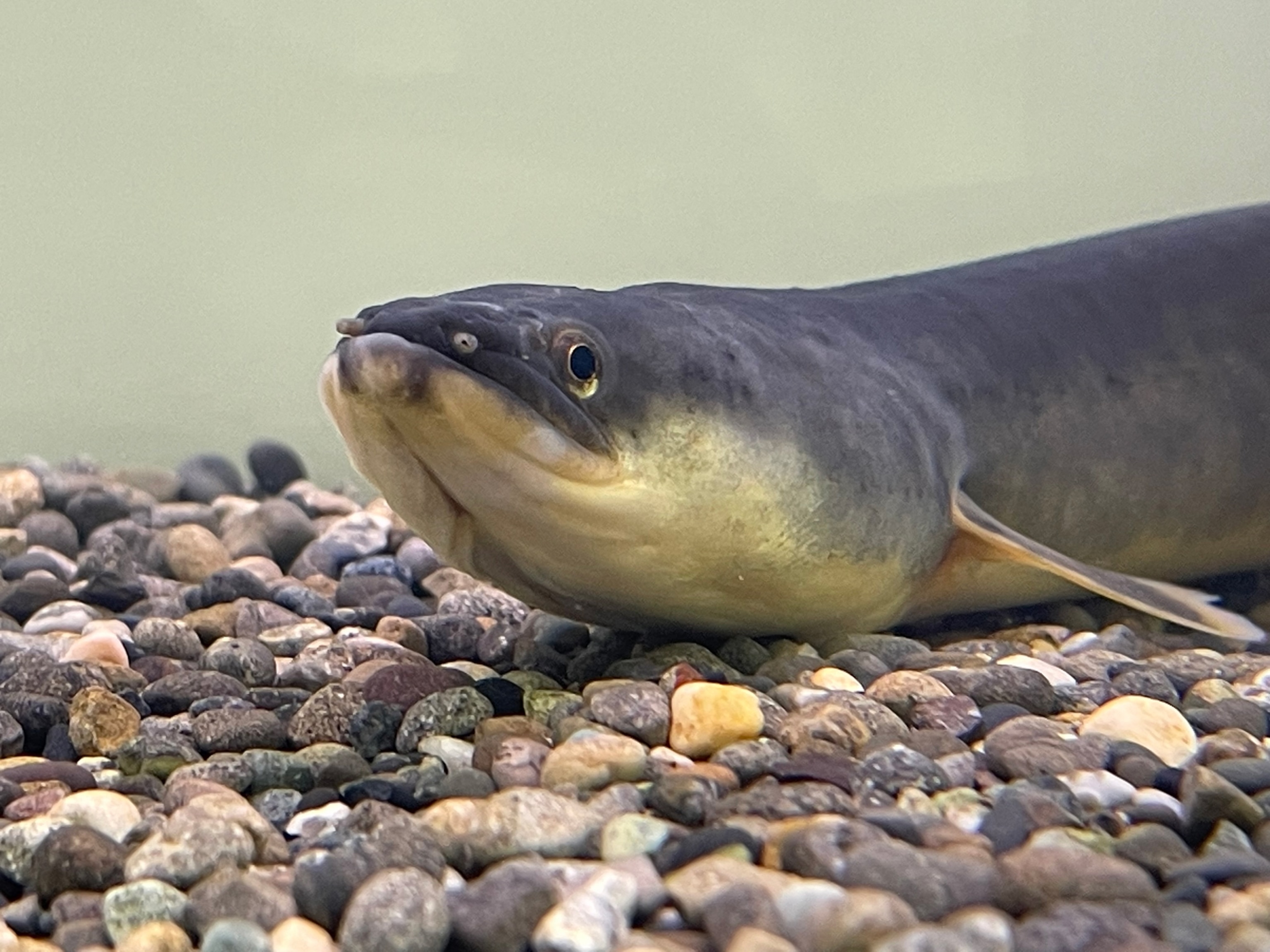
Invasive Asian Carp Found Breeding in "Surprising" Location
The notorious fish has been found in the upper Mississippi.
One of the most reviled invasive fish in North America has been unexpectedly found in the upper Mississippi River, raising concern about its spread, federal scientists announced Tuesday.
The invasive Asian carp has been breeding and spreading across the U.S. for more than 20 years, "but we were surprised that they got up so far," says Cindy Kolar, a science adviser on invasive species for the U.S. Geological Survey (USGS).
On Tuesday, USGS said its scientists found Asian carp eggs, including late-stage embryos nearly ready to hatch, in samples taken in 2013 from the upper Mississippi River in Lynxville, Wisconsin. That's 250 river miles (400 kilometers) upstream of their previously known reproductive populations.
Ecologists worry about the Asian carp because it is a large fish that can grow up to 110 pounds (50 kilograms), too big for predators to keep in check. It eats copious amounts of plankton and aquatic vegetation, with significant impacts on other species. Sports fishers fear it will crowd out their quarry.
As a result, the federal and state governments have spent hundreds of millions of dollars on efforts to thwart the spread of Asian carp, including the use of electric barriers, water guns, and scent-based lures to try to catch them.
Despite those efforts, the spread of the fish through the Mississippi River Basin has been well documented, with fishers occasionally pulling adult carp out of the water as far north as the Twin Cities, said Kolar. "But no one thought they would be reproducing that far north," she said of Lynxville, which is about 200 miles (320 kilometers) southeast of the Twin Cities.
Northern Exposure
Kolar says the scientists had not been looking for Asian carp around Lynxville. Instead, they were hoping "to get some background on other fish before Asian carp began invading."
But they found Asian carp eggs at seven locations between Keokuk, Iowa, and the main channel of the upper Mississippi River near Lynxville.
Kolar adds that the scientists are puzzled as to how the fish get so far up the Mississippi. At no time of the year is the water high enough for the fish to jump over a series of dams, she says.
"Were they carried inadvertently in bait buckets?" she asks. "Understanding how they got there is important in stopping their spread in the future."

What Are Asian Carp?
The term Asian carp can be confusing, because it is generally applied to a group of related species, including the bighead (Hypophthalmichthys nobilis), silver (Hypophthalmichthys molitrix), grass (Ctenopharyngodon idella), and black carp (Mylopharyngodon piceus). These fish are all related to the familiar goldfish, koi, and common carp (Cyprinus carpio). The latter has already been established as an invasive species across most of North America for more than a century.
The eggs identified by the scientists today in the Mississippi were identified as either bighead or silver carp. The researchers say it's also possible that some may be grass carp.
Asian carp have worked their way northward through the Mississippi over the past few decades. They are thought to have escaped from aquaculture operations in the South in the 1970s, where they were imported to clean ponds.
Asian carp are generally considered better eating than common carp, and they are prized as food in Asia, where they have been farmed for more than 1,000 years. As part of efforts to control their spread in the U.S., a growing number of biologists are trying to convince people to catch and eat them, with varying degrees of success.
Are the Great Lakes Safe?
The biggest fears over the spread of the Asian carp have centered around whether they will make it into the Great Lakes, which are critically important for fishing and tourism, and are thought to be at high ecological risk. Millions of dollars have been spent on barriers in the Chicago River to try to keep them out, although critics have questioned if the invasion is just a matter of time.
In 2012, four grass carp were caught by a commercial fisher in the Sandusky River, a tributary of the Great Lakes.
Kolar says the finding in Lynxville doesn't have any direct bearing on whether the fish might enter the Great Lakes. She said the area is close enough to the headwaters of the river that it is essentially a "dead end."
But she says fears about the Asian carp's spread are "warranted." Kolar says, "We notice changes in fish populations in places where they are, so there is definitely concern about them getting into the Great Lakes."





